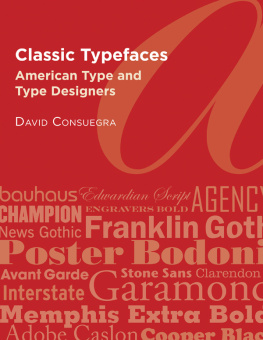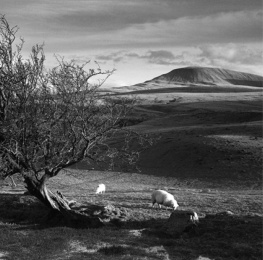The Journey of A Good Type
From Artistry to Ethnography in Early Japanese Photographs
David Odo
Foreword by Elizabeth Edwards
When Japan opened its doors to the West in the 1860s, delicately hand-tinted photographic prints of Japanese people and landscapes were among its earliest and most popular exports. Renowned European photographers Raimund von Stillfried and Felice Beato established studios in Japan in the 1860s; the work was soon taken up by their Japanese protgs and successors Kuichi Uchida, Kimbei Kusakabe, and others. Hundreds of these photographs, collected by travelers from the Boston area, were eventually donated to Harvards Peabody Museum of Archaeology and Ethnology, where they were archived for their ethnographic content and as scientific evidence of an exotic culture.
In this elegant volume, visual anthropologist David Odo examines the Peabodys collection of Japanese photographs and the ways in which such objects were produced, acquired, and circulated in the nineteenth century. His innovative study reveals how the images shifting and contingent uses from tourist souvenir to fine art print to anthropological type record were framed by the desires and cultural preconceptions of makers and consumers alike. Understood as both images and objects, the prints embody complex issues of history, culture, representation, and exchange.
DAVID ODO is Director of Student Programs and Research Curator of University Collections Initiatives at the Harvard Art Museums and a Lecturer in the Department of Anthropology at Harvard University.
ELIZABETH EDWARDS is Research Professor in Photographic History and Director of the Photographic History Research Centre at De Montfort University in Leicester, England.
Jacket illustrations:
Front: Two women, c. 1870s. Studio of Stillfried & Andersen Co., Raimund von Stillfried, photographer. PM 2003.1.2223.27 (101380029). Courtesy of the Peabody Museum of Archaeology & Ethnology, Harvard University.
Back: Man in samurai armor, c. 1870s. Raimund von Stillfried. PM 2003.1.2223.396 (101170017). Courtesy of the Peabody Museum of Archaeology & Ethnology, Harvard University.
Printed in Canada
Singing Girl (A good type), 1870s. Studio of Stillfried & Andersen Co., Raimund von Stillfried, photographer. Hand-tinted albumen print on paperboard mount. Print: 19.2 23.7 cm (7 9 in.); mount: 28 35.5 cm (11 14 in.). Collected by William S. Bigelow, 1880s. Gift of Mary Lothrop, 1927. PM 2003.1.2223.310 (101160028).

Peabody Museum Press
11 Divinity Avenue, Cambridge, Massachusetts 02138
Copyright 2015 by the President and Fellows of Harvard College
All rights reserved. Published 2015.
Unless otherwise noted, all photographs and illustrations are courtesy of the Peabody Museum of Archaeology and Ethnology, Harvard University. Photographs on are copyright the President and Fellows of Harvard College.
Printed in Canada
ISBN 978-0-87365-411-1
Library of Congress Cataloging-in-Publication Data:
Odo, David.
The journey of a good type: from artistry to ethnography in early Japanese photographs / David Odo; foreword by Elizabeth Edwards.
pages cm
Includes bibliographical references and index.
ISBN 978-0-87365-408-1 (cloth: alk. paper)
1. PhotographyJapan19th centuryHistory. 2. JapanHistory19th centuryPictorial works. 3. JapanHistory19th century. 4. Visual anthropologyJapan19th century. 5. Peabody Museum of Archaeology and EthnologyPhotograph collections. I. Peabody Museum of Archaeology and Ethnology. II. Title.
TR105.O34 2015
770.952dc23 2014044372


This paper meets the requirements of ANSI/NISO Z39.48-1992 (Permanence of Paper).
Singing Girl (A good type)

A lmost all museums have photographs in their collections. Over the years these collections have been generated, acquired, and utilized in a myriad of ways. Some collections are the result of intentional and systematic collection, some are the result of ad hoc enthusiasms, yet others are the result of almost accidental photographic accruals around object collections; often, the process is entirely serendipitous. These accumulations and assemblages of photographs exist for a multitude of reasons and fulfill a multitude of roles: as documents and evidence in their own right; to authorize and authenticate other classes of objects; to manage collections; to act as surrogate collections; to salvage material and cultural subjects thought to be disappearing; as objects of art, science, or technology; or even as a simple source of wonder, delight, or curiosity. The photograph collections at the Peabody Museum at Harvard are all these things. In The Journey of A Good Type, David Odo has undertaken the brave task of guiding us through this maze by examining the museums holdings of late nineteenth- and early twentieth-century photographs of Japan, notably those that formed the Bigelow collection, acquired in 1927. While these photographs are amply worthy of attention in their own right, Odo importantly asks what the Japanese photographs tell us more broadly about what photographs do in museums.
Writing about collections history and ethnographies of collections and institutional practices is well established, of course. Scholars have looked at topics as diverse as the seventeenth-century Wunderkammer, the eighteenth-century passion for the classical, and the colonial collections of the nineteenth and early twentieth centuries. However, the history of photograph collecting and photograph collections has received little attention. Possibly this is because the role of photographs in museums has been seen as something ancillary, of marginal statusand indeed interestin relation to the real business of museums. Photographs are merely information, not real collections. Yet we are beginning to realize that such collections have a lot to tell us about museums, their collections overall, and especially the way museums make knowledge.
To understand the mechanisms of nineteenth- and early twentieth-century photographic collecting in institutions such as the Peabody Museum is to understand a lot more than simply a photographic history. Conversely, how many kinds of thing can an object be simultaneously: art, science, document?
The answer is that the meanings of both photograph and collection are made through all those different moments of production and use in some way or other, as the photographs become multiply entangled with shifting values. Indeed, another reason why photograph collections have tended to be marginalized within institutions and within the writing of collections history is that they do not always sustain a specific and unchanging notion of relevance or importance over time. Instead, they drop away into yesterdays science. To our contemporary eye, studio portraits of Japanese figures do not measure up as scientific databut that flux is precisely their interest. The fascinating account here of the division of Bigelows collection between the Peabody, Harvard University, Museum and the Museum of Fine Arts, Boston, speaks volumes because it tells us exactly how the categories of interest and significance were being made at a certain historical moment.





 This paper meets the requirements of ANSI/NISO Z39.48-1992 (Permanence of Paper).
This paper meets the requirements of ANSI/NISO Z39.48-1992 (Permanence of Paper).













